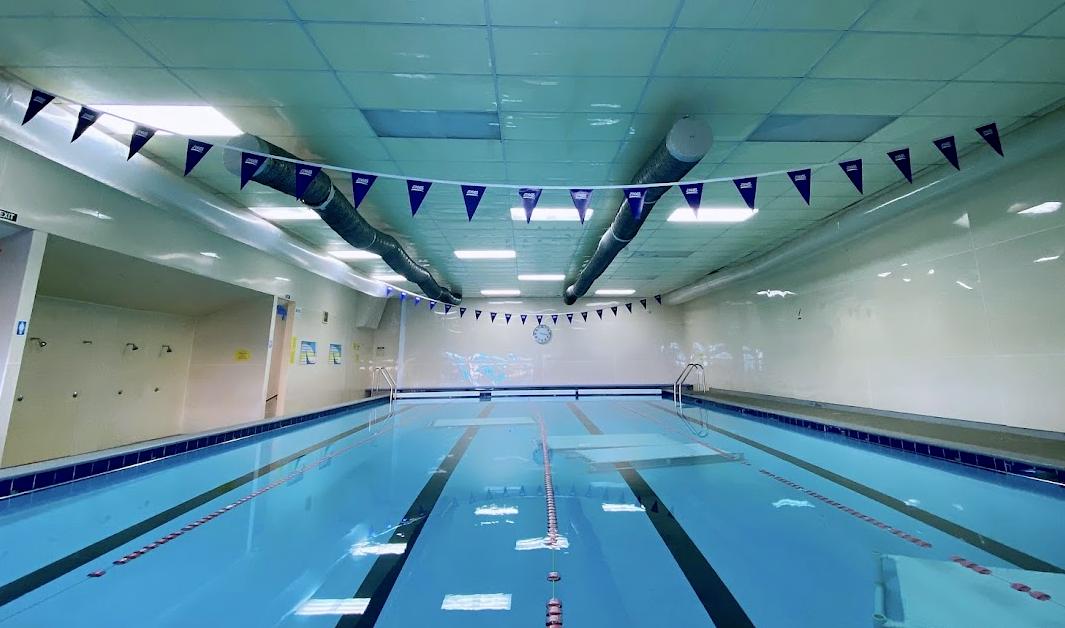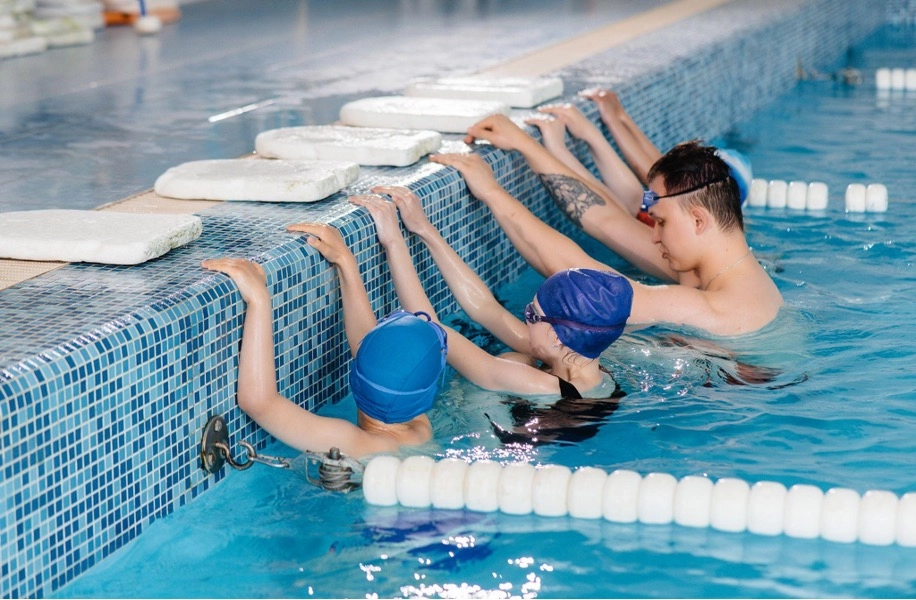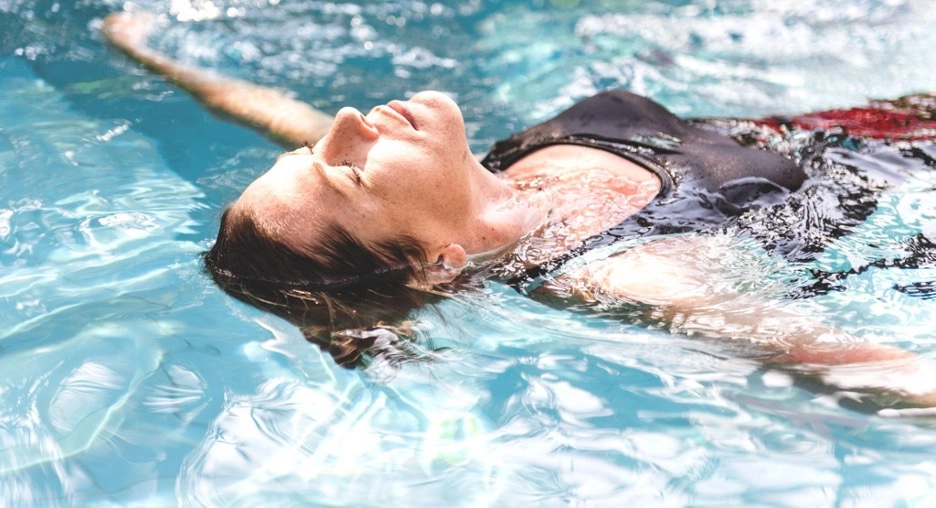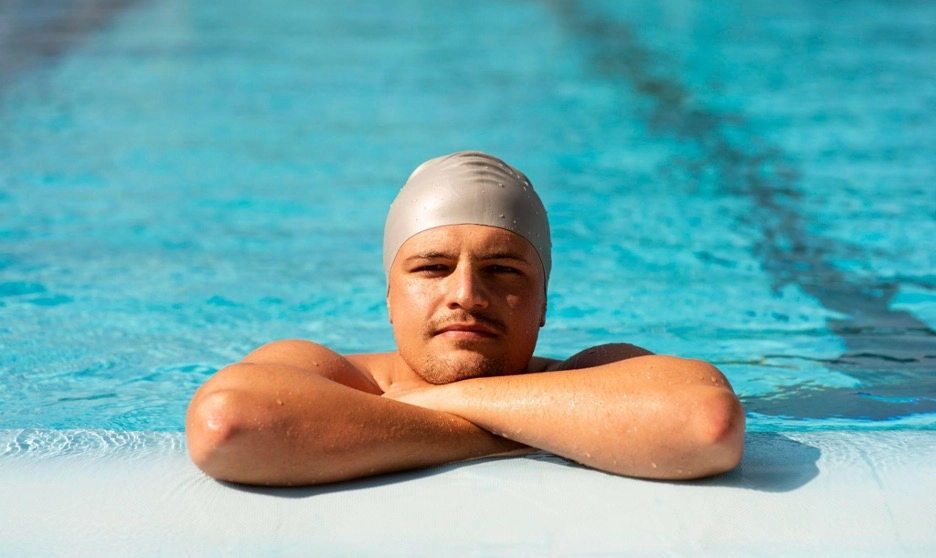





If you’re a swimmer, you’ve probably wished you could swim just a little bit faster, maybe to hit a personal best, to compete stronger, or simply to enjoy your laps more. We get you! Speed in swimming isn’t just about strength — it’s about technique, training smart, and fine-tuning every little detail that helps you glide through the water more efficiently.

At Aqua Artist Swimming School, we’re passionate about helping every swimmer, from beginners to advanced athletes, to achieve their best. If you're ready to pick up the pace on how to swim faster, we’ve pulled together 20 of the best tips and exercises to improve your swimming speed. Ready to dive in?
How to streamline your body position for faster swimming : Learn why your body’s alignment plays a major role in reducing drag and improving speed, and how small adjustments to head, core, and arm positioning can make a big difference in the water.
Techniques to improve your catch, pull, and kick efficiency : Understand how to optimise your stroke technique, from starting with a strong catch to finishing each pull properly, and how improving your kick rhythm can maintain your momentum throughout the swim.
Smart training methods like interval and sprint sets : Discover how structured workouts like interval training and sprint sets can build your endurance, sharpen your speed, and teach you how to maintain technique under pressure.
Dryland strength exercises to boost swimming performance : Find out why strengthening your core and major muscle groups outside the pool helps create a stronger, more stable, and more explosive swimming technique inside the pool.
Mental strategies for goal setting, pacing, and stress management : Explore the mental side of faster swimming, including how to set effective goals, manage race-day nerves, and use visualisation techniques to mentally rehearse success.
Nutrition and recovery tips to support faster swim progress : Learn why eating the right foods, getting enough rest, and incorporating active recovery are essential parts of your journey toward becoming a faster, stronger swimmer.
The fastest swimmers are often the ones who cut through the water with the least resistance. Your body position is key here. Here’s how you can do it:
Think of your body as a torpedo. It needs to be smooth, tight, and pointed forward. You can join structured swimming classes to help reinforce these techniques with expert guidance and regular practice.
Once you’ve sorted out your position, your next focus should be your arms, particularly how you catch and pull the water.
Remember, each stroke should feel powerful and purposeful, not rushed.
Your legs might not seem like they do much, but they play a huge role in maintaining your speed and body position. Here’s what you can do:
In fact, a strong, steady kick can make all the difference when you’re trying to pick up speed. It also prevents your lower body from sinking by reducing the drag.
Speed doesn’t just happen at the surface. Some of the best Olympic swimmers in the world gain their edge underwater. Underwater dolphin kicks are often called the "fifth stroke" because they're so important for elite speed, especially off starts and turns.
In competitive swimming, most races are won or lost in the underwater phases. As a matter of fact, strong dolphin kicks can give you a huge edge without adding extra strokes.
Perfect turns and push-offs are often the secret weapon of fast swimmers. Instead of losing speed at the walls, you can actually gain it by focusing on strong, clean techniques every time you hit the wall.
This matters because the wall is your launchpad. Improving your flip turns and push-offs can instantly cut down your times, even if your actual swim speed stays the same. Isn’t that amazing?
Did you know that poor breathing habits can disrupt your whole stroke rhythm?
Learning the top breathing techniques is a must for keeping your body calm, your rhythm steady, and your speed consistent. But this is a complex process to master. The best approach to this is to get the help of a professional swimming trainer, just like the experienced instructors we have at Aqua Artist Swimming School.

If you train without a proper structure, you may build endurance, but you won’t build controlled, explosive speed. That’s why you need a structured swimming training program. It helps you combine technique, stamina, and pace control to get real results over time.
Something you want to keep in mind is, speed doesn’t just come from swimming harder. It comes from swimming smarter. This refers to swimming repeated sets with planned breaks in between, not just swimming laps until you’re tired. The idea is to swim at a consistent pace, take a short rest, and then go again. Try this:
Interval training improves your cardiovascular fitness and teaches you how to manage pace under pressure. Over time, you’ll find it easier to keep a faster pace for longer without burning out. This is a game-changer in competitive swimming.
Speed is all about moving your arms faster and efficiently. One of the best ways to train for that is by improving your Distance Per Stroke (DPS). Here’s how to start:
Improving your DPS means you're using each stroke to travel farther. This reduces unnecessary energy use and gives you more endurance for when you need to sprint or finish strong.
Building pure sprinting power sharpens your muscles, improves your reaction time, and strengthens your finishes. Even if you’re a long-distance swimmer, sprint training is an essential way to improve overall swim speed.
Many swimmers start strong but fade out by the end. To keep up your speed from start to end, here’s a pacing strategy to try:
Learning to pace teaches you body awareness and control. You become more in tune with how much energy you're using and how much you have left in the tank. And when it comes to races or timed sets, being able to speed up at the right moment can make all the difference.
How quickly you move your arms through the water is known as your swim tempo. This plays a huge role in how fast you swim.
A too-slow tempo wastes time; a too-fast tempo can lead to sloppy strokes. Mastering your swim tempo helps you find the sweet spot where you’re fastest and most efficient.

Speed in the pool doesn’t just come from swimming more, it also comes from how well you train outside the water. Dryland exercises are a powerful way to build the strength, stability, and flexibility you need to swim faster and with better technique. Actually, the benefits of dryland exercises extend beyond physical strength, helping swimmers improve body control, injury prevention, and overall performance in the water.
Your core is the centre of everything you do in the water. It keeps you balanced, helps with body rotation, and holds your body in a streamlined position as you swim. Add these exercises to your routine:
A strong core means you stay in a tighter, straighter line in the water. As we mentioned above, this reduces drag. So, less drag means more speed. In short, strengthening your core will make you faster and more efficient.
You don’t have to lift heavy weights to improve your swim strength, but building a solid foundation of power in the right muscles makes a huge difference in the water.
Targeted exercises include:
Adding resistance training a few times a week helps you swim with more force and control. You’ll feel stronger during each stroke and more capable of speeding up when it counts.
Being flexible is just as important as being strong. If your muscles and joints can’t move through their full range of motion, your stroke will feel restricted, and that means wasted energy and slower times.
Try these warm-up exercises in your daily routine:
When your body moves freely, your swimming becomes smoother and more efficient. A few minutes of targeted stretching each day can lead to better technique, fewer injuries, and improved performance in the pool.

Before you set out to get faster, set a goal for yourself. Without clear goals, it’s hard to track your progress.
Clear goals give every session a purpose and keep you motivated through the tough ones.
Your mind can be one of your strongest assets.
Such mental rehearsal prepares your body to follow what your mind already believes is possible.
Nerves are normal, but learning to handle them gives you a big advantage.
The calmer and more focused you are, the better you’ll swim.
Our swimming school takes such mental preparation seriously. We structure our swimming lessons in this way to achieve your personal goal, whether it is a swimming lesson for a 3-year-old or a squad swimming training for an adult.

Eating right fuels all the hard work you put in at the pool. Here’s a quick overview of what you can include in your diet as a swimmer:
This is where the magic really happens, and as a swimmer, you might know this already. Your body repairs and prepares during rest, not during training.
Remember, rest doesn’t mean being lazy; it’s part of your training plan.
On your "off" days, it’s good to keep moving gently.
Light swimming, yoga, or even a short walk can improve circulation and reduce muscle soreness.
Active recovery helps you bounce back faster and train harder next time.
The secret to learning how to swim faster is not just one thing. It’s a set of all small improvements that you need to bring into your routine together. It’s all about mastering your technique, training smart, building your strength, sharpening your mindset, and looking after your body outside the pool.
At Aqua Artist Swimming School, we believe every swimmer has untapped potential. Whether you’re just starting or you’re aiming to shave seconds off your race time, we’re here to help you pick up the pace and swim your fastest yet.
Ready to transform your swimming and leave slow laps behind? We offer swimming programs that focus on technique, speed-building, and mental strength, exactly what you need to become a faster, more confident swimmer. Join us today and unlock your full potential. Book a free assessment or talk to our swim coaches now!